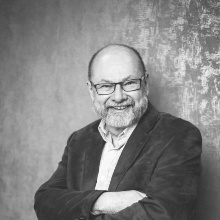General Information
Summer semester 2021. The exact dates will be communicated soon.
Online course
Master and PhD students of Simulation Technology, Applied Mathematics, Engineering, Physics, Computer Science with decent mathematical knowledge. Participants will get 6 ETCS for attending the course.
This course is organised by the Cluster of Excellence SimTech.
The registration is possible via Campus.
The course is free of charge.
- Lectures: 2 semester hours/week
- Reading discussion: 1 semester hour/week
This novel course addresses master and PhD students with basic knowledge and experience in continuum mechanics based mathematical modeling and numerical simulations of natural or technical processes. Its goal is to provide or refresh or widen the necessary background information from mathematics, both concerning model formulation and validity and discretization and solution methods. Due to this wide span, the lecture can only touch selected topics, also relying on the active reading activity of the participants. In particular, specific interests and questions of the participants can be addressed in the discussion hours. Examples of questions which may come up and be discussed are
- Is my model thermodynamically consistent ?
- What means mathematically rigorous or formal, what are the consequences ?
- What am I allowed to do with which functions ?
- What is a good discretization method ?
- Is my discretization locally mass conservative, if not, what to do ?
Content
- Mathematics of continuum mechanics(Conservation laws, constitutive laws, second law of thermodynamics, frame indifference,viscous fluids, elastic solids)
- Mathematics of partial differential equation (pde) models (Classical, weak, conservative, variational formulations, survey of existence, uniqueness qualitative properties for elliptic and parabolic equations)
- Scales of modeling, models with several scales, scale transition (Periodic homogenization: formal two-scale expansion vs. rigorous two-scale convergence, theory of averaging, mixture theory, particle scales)
- Approximation methods for linear pde models: Selection criteria (Finite difference method, conforming and nonconforming finite element methods, mixedmethods: stability via inverse monotonicity, coercivity, or LBB, approximation space error,consistency error, convergence error, orders of convergence, superconvergence, qualitative properties: maximum principles, flux approximation, local mass conservation,postprocessing)
Students
- derive models for fluid mechanics and elasticity theory,
- evaluate the predictive power of models using physical modelling assumptions and the qualitative characteristics of solutions,
- apply analytical techniques to rigorously prove qualitative properties of solutions,
- apply algorithmic approaches for models with partial differential equations and explain and evaluate them,
- are capable to judge on a numerical method’s properties regarding stability and efficiency,
- apply a broad spectrum (focus on conforming finite element methods for parabolic problems), extending these approaches also to nonlinear problems,
Used textbooks
1. Eck, H. Garcke, P. Knabner: Mathematical Modeling, Springer, 2017
2. Knabner, L. Angermann, Numerical Methods for Elliptic and Parabolic Partial Differential Equations, Springer, New York, 1st edition 2003, extended 2nd edition 2021 (will be provided for internal use)
Lecturer
Prof. Dr. Peter Knabner works in the field of Applied Analysis and Numerical Mathematics. After his Abitur in 1972, he studied mathematics at the Free University of Berlin and computer science at the Technical University of Berlin. After his diploma, he dealt for example with free boundary value problems and received his doctorate in 1983 at the University of Augsburg. There he habilitated in 1988 on mathematical models for transport and sorption of dissolved substances in porous media. Since 1994 he holds the chair of applied mathematics at the Friedrich-Alexander University Erlangen-Nürnberg.
Since the 1980s he has concentrated on the derivation, analysis and numerical approximation of mathematical models for flow and transport in porous media, with the aim of contributing to mathematics as well as to the concerned applications in engineering and natural sciences, in particular hydrogeology. The spectrum meanwhile extends to multiphase multicomponent flows, with vanishing/developing phases, general chemical reactions and effects of evolving microstructure on porous media flow.



